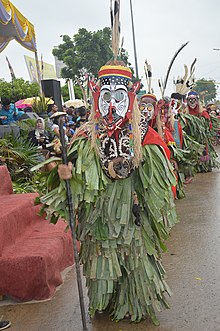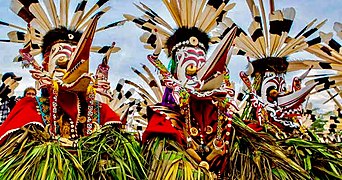This article needs additional citations for verification .(September 2007) |
 | |
| Native name | Tari Hudoq |
|---|---|
| Origin | Indonesia (East Kalimantan) [1] |
| Hudoq |
|---|
|
| Burma |
| Cambodia |
| Indonesia |
|
| Laos |
| Malaysia |
| Philippines |
| Singapore |
| Thailand |
|
| Vietnam |
Hudoq is a masked dance performed during the Erau harvest thanksgiving festival by many of the sub-groups of the Dayak ethnic group in East Kalimantan province, Indonesia. [1] The Hudoq culture and performance are indigenous to the Dayak population of East Kalimantan province, and they are said to have originated from Mahakam Ulu Regency. [2]













